Create an Amazon Business Account

Register a SNAP EBT card with Amazon
Grumman's Cats
The First Cat: The F4F Wildcat

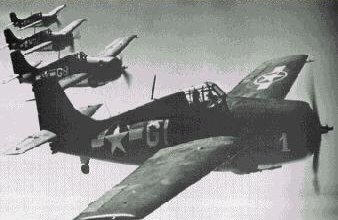 The F4F-4 Wildcat
The F4F-4 Wildcat
Few, if any, aircraft manufacturers have ever earned the great respect and name
recognition that Grumman did over the past seven decades. From the F2F of the
1930’s through the F-14D Tomcat, no other single manufacturer of fighter aircraft
has produced such a continuous line of successful designs. Known universally as
the "ironworks", the name "Grumman" is synonymous with extremely rugged and
completely competent aircraft.
During the 1930’s, Grumman designed and manufactured the Navy’s F2F and F3F
biplane fighters. These aircraft were known for their excellent strength and pleasant
flying qualities. They also introduced the now familiar "bottle" shaped fuselage. In
1936, the Navy issued a new specification for a carrier borne fighter. Grumman
submitted a design which was little more than an evolution of their F3F biplane.
The prototype featured manually retracting landing gear as did both the F2F and
F3F. Also a biplane, the XF4F-1 lost out to Brewster’s monoplane design, officially
designated the XF2A-1 Buffalo. Navy officials, however, not entirely willing to place
too much trust in Brewster, which had not yet established itself as a dependable
builder of aircraft, ordered one prototype of the XF4F-1from Grumman. Realizing
that a biplane design would never win a contract, the XF4F-1 was put aside and
Grumman set to work designing a new monoplane fighter to be designated as the
XF4F-2. The prototype was first flown on September 2, 1937 at Grumman’s Long
Island facility.
The XF4F-2 was turned over to the Navy for testing and eventually competed in
a fly-off with the Brewster and Seversky’s XFN-1, a navalized version of the P-35
fighter. The XF4F-2 proved to be slightly faster than either of its competitors.
However, speed was its only advantage over the Buffalo and Brewster received
a contract to produce their fighter on June 11, 1938.
Apparently, the Navy was impressed enough with the XF4F-2 to give Grumman
a contract to further develop the aircraft. Grumman put the little fighter through an
extensive redesign. A new and more powerful P&W R-1830-76 engine replaced
the lesser performing variant. This engine had a two stage supercharger, greatly
improving the aircraft’s performance above 15,000 feet. The wing received some
attention as well. The span and area were increased, and the wing tips were squared
off. The entire tail of the fighter was redesigned twice before the XF4F-3 was handed
over to the Navy for testing. In its final form, the Wildcat, as it would be called, easily
out-performed the F2A Buffalo, which, with the addition of required equipment, had
lost some of its performance, and the Navy placed an order for 78 F4F-3 fighters
on August 8, 1939.
With the beginning of America’s involvement in the Second World War, the F4F-3
was the Navy’s newest and best carrier borne fighter. Inferior to the Japanese type
Zero fighter (A6M2) in flight performance, the Wildcat nonetheless proved to more
than a match in combat. Utilizing the F4F’s great strength and superior firepower,
Navy and Marine pilots consistently bettered their Japanese opponents. Using the
F4F’s remarkable dive speed (the airframe was so strong that it didn’t have a red-line
limit) to attack and escape, along with "team" tactics such as the "Thatch weave", the
F4F proved to be effective in aerial combat during the first year of the war as a "front
line" fighter in the Pacific.
The Wildcat served throughout the world. The Royal Navy took over a French order
of 71 re-engined F4F’s (Wright R-1820 radial) and designated them the Martlet Mk.I.
Several variants of the F4F served with the Fleet Air Arm, up through the Martlet Mk.IV.
When the newly designed F6F-3 Hellcat was under development, it was obvious that
Grumman was going to need all the production capacity they could muster. Grumman
arraigned a deal with General Motors to switch production to their Eastern Aircraft
Division. GM’s first Wildcats were designated the FM-1. Later, GM developed a more
powerful variant utilizing the Wright R-1820-56 radial rated at 1,350 hp, 150 hp more
than the P&W R-1830-36 of the F4F-4. Based upon Grumman’s XF4F-8 prototype,
an enlarged vertical stabilizer was employed to offset the increased power’s effect on
stability. These fighters were designated the FM-2. The Royal Navy used both the FM-1
and the FM-2, designating them the Martlet Mk.V and Mk.VI, respectively.
Greatly outclassed by newer designs, the Wildcat nonetheless was the primary fighter
available to the U.S. Navy and Marine Corps for the first year of the war. They were
instrumental in stemming the Japanese advances of early 1942. In the hands of men
such as Butch O’Hare, John L. Smith, Marion Carl and Joe Foss, the Wildcat was not
to be underestimated. However, the Wildcats days as a first string fighter were almost
over. A new Grumman fighter, conceived before the Pearl Harbor attack, was on it’s
way to the fleet, and it was an order of magnitude better than its ancestor.
The Killer Cat: The F6F Hellcat
<
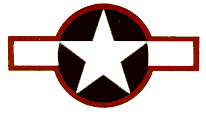
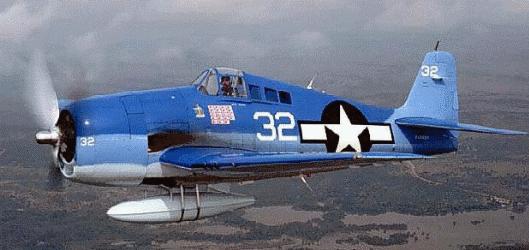 The F6F-5 Hellcat
The F6F-5 Hellcat
Developed as a result of a program to design a successor to the F4F Wildcat, the
Grumman engineers had the benefit of the accumulation of data from the European
air war. The F4F had already seen combat with the Royal Navy as the Martlet in late
1940. The Fleet Air Arm had sent their combat evaluations to Grumman, and these
were instrumental in convincing Grumman that more was required than merely updating
the Wildcat design. It was plain to see that the F4F lacked the speed and climbing
ability to take on the Bf-109 on anything like even terms. If the Messerschmitt pilot
used his speed advantage, there was little the F4F could do but fight defensively.
When the German elected to get into a turning contest with the stubby Grumman,
he quickly found the Martlet to be a very nimble foe. That the Martlet could out-turn
the Bf-109, and even match it in a dive, were of small consolation. It needed greater
speed and climb to tackle the Luftwaffe with equality.
The surefire method of gaining higher performance was to install a more powerful
engine. Unfortunately, the small F4F airframe was not readily adaptable to this type
of solution. In this case, to obtain more power meant a larger engine. This, in turn,
meant the Wright R-2600 radial. There was little doubt that the F4F would require a
major redesign to accommodate this powerplant. A larger propeller would be required
as well. The engineers realized that the short F4F airframe could not manage the far
greater torque of the R-2600-10, which was rated at 1,600 bhp. A decision was quickly
reached to design an entirely new aircraft.
The designers took this opportunity to make some much needed changes. The F4F’s
manually operated landing gear would be replaced by one operated hydraulically. The
narrow track of the Wildcat’s landing gear would be eliminated as well. In November
1941, the basic design concept was set down. A far larger and even stronger airframe
was to be incorporated, with a very large wing mounted lower than the mid-fuselage location
of the F4F. The new wing location allowed for landing gear that retracted into the wing,
instead of folding flush with the fuselage as on the Wildcat. This, in turn, allowed for a
much wider track, greatly improving stability on the ground or deck.
Even before work had begun on the new F6F prototype, it was decided to upgrade the
engine to the new and more powerful Pratt & Whitney 2,000 bhp R-2800-10 engine.
This same engine, in one guise or another, was already powering the XF4U-1 and the
P-47B Thunderbolt. The XF6F-1 first flew on June 26, 1942 with the R-2600 fitted.
The first test flights revealed that, although there would need to be some minor
changes, the basic design was sound. Thirty four days later, the XF6F-3 took off
with the R-2800-10 hauling the new fighter into the sky.
Grumman quickly made all necessary changes to the XF6F-3, and with the design
finalized, began manufacturing the big fighter. On October 4, 1942, the first F6F-3
production aircraft took off on its maiden flight. The first deliveries were made to
Navy squadron VF-9, deployed aboard the Essex, beginning in January 1943.
Despite a few minor ground handling quirks, the Hellcat was very well received. By
mid August 1943, squadrons aboard the Yorktown, Independence and the Essex
were combat ready. In addition, squadrons aboard the light carriers Princeton and
Belleau Wood were ready as well.
The Hellcat’s first combat mission occurred on August 31, 1943, where VF-5 and
VF-9 took part in attacks on Marcus Island. It wasn’t until December that the F6F
ran into Japanese fighters in force. Near Kwajalein Atoll, 90+ Hellcats slugged it
out with about 4 dozen Zeros. No less that 28 A6M’s were splashed for the loss
of just 2 of the big navy fighters. The one fight that forever sealed the reputation
of the Hellcat was the Battle of the Philippine Sea, always to be remembered as
"the Great Marianas Turkey Shoot". During this remarkably one sided engagement
between U.S. and Japanese carrier forces, somewhere between 320 and 345
Japanese carrier aircraft were shot out of the sky, mostly by Hellcats from the U.S.
carriers, Lexington, Essex, Bunker Hill, Princeton and Cowpens. The total combat
loss of USN aircraft, of all types was just 30.
It was completely obvious that Grumman had fulfilled their design goals with the
F6F. The Hellcat demonstrated itself to be superior to the A6M Zero. In level flight,
the F6F was up to 35 mph faster. In a climb, the Zero held no advantage. In fact,
above 15,000 feet the F6F held a considerable edge. The A6M, hopeless in a dive,
with a 450 mph Vne limit (never exceed velocity), the Hellcat could quickly haul in a
diving Zero or escape at speeds the A6M could not hope to attain. At speeds above
250 mph, the Hellcat could actually out-turn the vaunted Japanese fighter, whose
ailerons stiffened severely at higher speeds, greatly reducing its roll response. Those
that flew the F6F loved the aircraft for its easy and vice free handling. They had
complete trust in the plane’s ability to absorb huge amounts of battle damage and
still get them back to their carrier.
Despite being somewhat inferior to the F4U Corsair in terms of performance, the
F6F nevertheless, was the aircraft of the highest scoring aces in the Navy. Names
like McCampbell (top Navy ace with 34 victories), Velencia, Smith, Rigg and hundreds
more like them, clearly demonstrated the effectiveness of the F6F Hellcat in combating
the Japanese.
Let’s not forget that the F6F served with distinction in Europe as well. USN Hellcats
flew missions over France in support of the Allied landings. During the invasion of
southern France (operation Anvil-Dragon), Hellcats flying from the escort carriers
Kasaan Bay and Tulagi (VF-71 and VFO-1) performed deep penetration attacks up to
100 miles inside France and flew CAP over the invasion fleet. Five Hellcats were lost
to anti-aircraft fire. These same two squadrons also accounted for three Heinkel 111's
and three JU-52 transports, shot down over France. They were denied an opportunity
to engage German fighters, who fled at their approach. All 6 German aircraft were downed
on August 19, 1944, D-Day +4.
The British used the F6F in significant numbers. The majority of these saw their only
combat in the Pacific. However, Fleet Air Arm Hellcat I fighters achieved success
against the Luftwaffe and Kriegsmarine. Royal Navy Hellcat I's (F6F-3) were involved
in escorting attacks on Tirpitz from April through August 1944. One of these missions,
on May 8, 1944, the Luftwaffe came up to protect the battleship. Some #800 squadron
Hellcats from HMS Emperor took on the German fighters and shot down 1 Fw-190
and two Bf-109G fighters. The Hellcats suffered one loss to the Luftwaffe and another
to anti-aircraft fire. RN Sub/Lt. B. Richie got the Focke-Wulf and went on to total 6 kills,
becoming one of only a few Royal Navy Hellcat aces.
Yet even as the Hellcats were establishing themselves in the sky near Kwajalein,
Grumman was beginning to test fly their latest Navy fighter design. This aircraft,
equiped with two of the mighty R-2800 engines would be the Navy’s first carrier
borne multi-engine fighter, and the first with a tricycle landing gear.
The Twin-cat: The F7F Tigercat
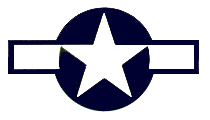
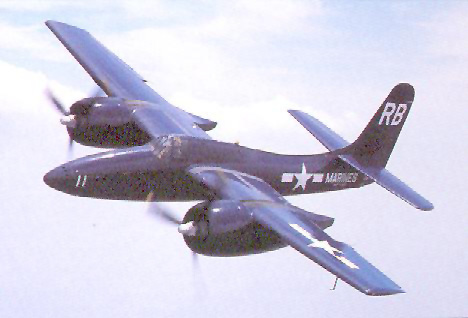 The F7F-1 Tigercat
The F7F-1 Tigercat
In 1938, Grumman presented a proposal to the Navy for a twin engine carrier based
fighter. Designated the G-34 proposal, the design was unlike any aircraft that had ever
been considered before by the USN. Grumman’s concept called for a light weight
(under 10,000 lbs maximum take off weight) aircraft powered by two 1,200 hp Wright
R-1820 engines. Being a low wing monoplane, the fuselage terminated aft of the wings
leading edge. At the rear of the markedly short fuselage, the tail assembly was not
unlike that of a B-25 Mitchell, however, with an pronounced dihedral to the horizontal
stabilizer. The propellers were geared to rotate in opposite directions to cancel the
effects of engine torque. The tail wheel was fully retractable. The proposed armament
was two 23 mm Madsen cannons.
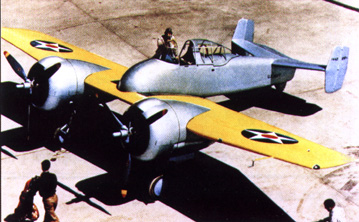 The XF5F-1
The XF5F-1
The Navy placed an order for one prototype, designated the XF5F-1, on June 30,
1938. The prototype took to the air for the first time on April Fools day, 1940.
The XF5F-1 demonstrated good flight performance, attaining a maximum speed
of 383 mph at 20,000 feet. Its rate of climb easily exceeded that of its sibling, the
F4F Wildcat. Modifications were made to lengthen the nose in an effort to increase
the plane’s linear stability. Grumman failed to gain any production orders from the
Navy. The Air Corps, however, showed an interest and contracted with the firm to
produce a prototype to be designated the XP-50. The Air Corps had some differing
requirements, and while generally similar to the XF5F-1, the nose had to be further
elongated to accommodate the requested tricycle landing gear arrangement. The
engine installation was different as well. Two turbocharged Wright R-1820-67/69 engines
were hung on the nacelles. The USAAC wanted good performance at high altitude.
Taking to the air in May of 1941, the XP-50 Skyrocket (as it was now called) suffered
from stubborn problems of engine overheating. The airframe eventually was written
off after being severely damaged as a result of a turbocharger explosion. No other
examples were built.
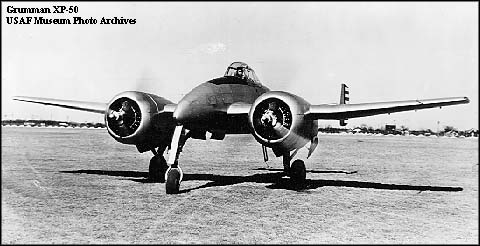
The XP-50 Skyrocket
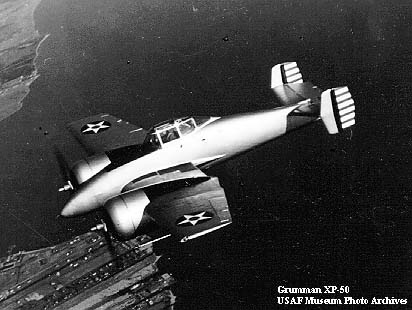 The XP-50 Skyrocket
The XP-50 Skyrocket
The investment of time and money devoted to the XF5F-1 and the XP-50 was not
wasted. These aircraft provided a base of data which was applied to Grumman’s
G-51 proposal. The XF5F-1 continued in R&D service until the end of 1944. The
new G-51 proposal described a high performance twin engine fighter to be deployed
aboard the new "Midway" class carriers. The Navy presented a requirement for an
unusually heavy armament. A contract was issued for two XF7F-1 prototypes in June
of 1941.
Designed as high wing monoplane, the outer panels folded up and over for carrier stowage.
Like the XP-50, the XF7F-1 was designed with a tricycle landing gear, the first for a
Navy fighter. The tailplane was of conventional configuration, the twin rudders of the
XF5F-1 being abandoned. The prototypes were powered by two Pratt & Whitney
R-2800-22W engines installed in remarkably large nacelles under each wing. Prior
to the XF7F-1 flying, Grumman received an order for 500 F7F-1 fighters with the
intention of being issued to the Marine Corps to provide their own close air support.
The prototype took to the air in December 1943. Right away it was obvious that the
new fighter was going to display extremely impressive performance. Unfortunately,
the 500 plane order was reduced as it became apparent that the production aircraft
would not be deployed for service before mid 1945. The first 34 examples delivered
were designated the F7F-1 Tigercat. The 35th plane off the line was modified as a
night fighter and re-designated the XF7F-2N. Subsequently, 30 additional F7F-2N
fighters were built. These had the fuselage fuel tank of the F7F-1 removed and a
second cockpit was constructed for a radar operator. An improved version of the
single seat fighter was then placed into production, designated the F7F-3. Grumman
built 189 of these which were powered by R-2800-34 engines to provide for improved
high altitude performance. The F7F-3 received a taller vertical stabilizer and a 7%
increase in fuel capacity.
All aircraft not yet completed were canceled shortly after VJ- Day. During the early
post war months, the Navy placed an order for 73 additional F7F-3N and F7F-4N night
fighters. Some F7F-3 aircraft were later converted to photo-recon work and designated
the F7F-3P.
In retrospect, it was unfortunate that the Tigercat did not see combat during the war.
In terms of performance, the F7F-3 was a true powerhouse. With a maximum speed of 435 mph,
and an initial rate of climb just under 4,600 fpm, the Tigercat was at the pinnacle of
piston engine powered aircraft development. Displaying remarkable maneuverability,
and perhaps, the fastest acceleration of any piston engine fighter ever, the F7F would
have made a noteworthy impression on the Japanese. The armament of the Tigercat
was no less awe inspiring, with four 20mm cannons and four .50 cal. machine guns,
making it one of the most lethal single seat fighters of the war. The first units
receiving the F7F were combat ready by July 1945. The Japanese surrendered only days
before the Tigercat’s expected combat debut.
Developed collaterally with the F7F, Grumman’s XF8F-1 would establish itself as
the highest performing single engine fighter of the WWII era. The last of Grumman’s
war time cats, this new fighter was even more impressive.
The Ultimate Cat: The F8F Bearcat

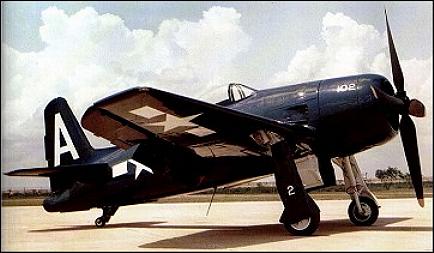 The F8F-2 Bearcat
The F8F-2 Bearcat
The F8F Bearcat was the final piston engine fighter developed by Grumman. The
criterion set down for the design was somewhat different than requirements for its
older sibling, the F6F Hellcat. This design was for an extremely high performance
interceptor. The design goals included unparalleled agility, unprecedented acceleration,
high rate of climb, excellent low level performance and the ability to operate off of
every carrier from the upcoming Midway class down to the smallest escort carrier.
Some historians have declared that the Bearcat was a response to Japanese kamikaze
attacks. However, while the F8F was certainly the best fighter for combating these
suicide assaults, the historians who espouse this theory are incorrect. The XF8F-1
was ordered in November 1943, the Kamikazes did not debut until eleven months
later in October 1944.
To power their new fighter, Grumman selected the tried and true Pratt & Whitney
R-2800 engine. In this instance the R-2800-34W was installed. The smallest possible
airframe was designed that could still incorporate the required armament , armor and
self-sealing fuel tanks. The prototype was not only considerably smaller than the F6F,
it had a wing span and overall length less than that of the stubby little F4F Wildcat.
The XF8F-1’s engine made the same horsepower as the that in the F6F, but with up
to 20% less weight than the Hellcat, its rate of climb was 30% greater. This also
allowed for a remarkable improvement in sustained turn rate over the F6F as well.
The Hellcat was no slouch in a turning contest, giving the Spitfire Mk Vb fits when
tested by the British in 1943. The Bearcat’s better power to weight ratio allowed it
to retain energy better than the F6F. Not only did the F8F have a better initial turn
rate, it had a significantly better sustained turn rate. It was found to out-turn the A6M5
Zero at speeds above 200 mph, and match it down to 160 mph, where the lighter Zero
held the edge. The incorporation of a teardrop, or "bubble" canopy provided for a vast
improvement in outside visability over the F6F, which soldiered with it's old fashioned
frame canopy.
With the Navy completely satisfied with the little powerhouse, an order for 2,023
F8F-1 fighters was placed. The first fighters being delivered to VF-19 on May 21,
1945, just 6 months after the prototype made its first flight. The squadrons which
received the Bearcat were not yet deployed for combat when the Japanese threw
in the towel. Given another month, the Navy would have had the opportunity to test
their new hotrod in combat. Not only did the F8F not see combat, but contracts were
canceled for over 3,000 additional Bearcats, including 1,876 F8M-1 fighters to be
built by General Motors’ Eastern Aircraft Division. Limited production ended in May
of 1949, with a total of 1,266 F8F’s being completed, including night fighter variants
(F8F-1N and -2N). There were also 293 F8F-2 aircraft built. These had revised cowling
and a taller vertical stabilizer. These were also armed with four 20mm cannon instead
of the F8F-1’s four .50 cal. Browning machine guns. Withdrawn from service in 1952,
some were sold to the French government and saw extensive use in Indo-China.
In terms of performance, the F8F was not only the ultimate "cat", it was also the ultimate
expression of the piston engine fighter. Other aircraft, such as the new P-51H and the
Spitfire Mk. XIV were faster, and in the case of the Spitfire, nearly as maneuverable.
However, no other aircraft in actual operational service could match the F8F’s total
performance envelope.
RESOURCES:
Richard Thruelsen, The Grumman Story.
Bill Gunston, Grumman : Sixty Years of Excellence.
William Green and Gordon Swanborough, The Complete Book of Fighters.
David Donald, The Complete Encyclopedia of World Aircraft.
USAF Museum Photo Archives.
Return To Planes and Pilots of WW2 Main Page

Unless otherwise indicated, all articles Copyright © Corey C. Jordan 1998.
Reproduction for distribution, or posting to a public forum without express
written permission is a violation of applicable copyright law. Some backgrounds
images
used on this website are the artwork of Corey C. Jordan. Reproduction for distribution,
or
posting these background images to a public forum without written permission is prohibited.













